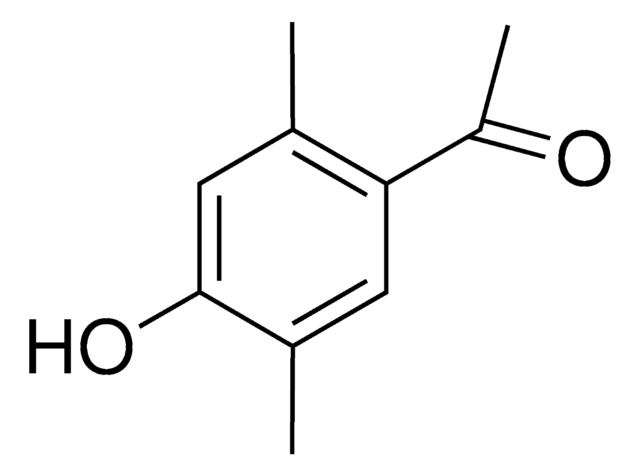405655
2-Hydroxy-2-methylpropiophenone
97%
Synonym(s):
1-Hydroxy-1-methylethyl phenyl ketone, 1-Phenyl-2-methyl-2-hydroxypropanone, 2-Hydroxy-2-methyl-1-phenyl-1-propanone, 2-Methyl-3-phenyl-3-oxopropan-2-ol
About This Item
Recommended Products
Assay
97%
form
liquid
refractive index
n20/D 1.533 (lit.)
bp
102-103 °C/4 mmHg (lit.)
density
1.077 g/mL at 25 °C (lit.)
SMILES string
CC(C)(O)C(=O)c1ccccc1
InChI
1S/C10H12O2/c1-10(2,12)9(11)8-6-4-3-5-7-8/h3-7,12H,1-2H3
InChI key
XMLYCEVDHLAQEL-UHFFFAOYSA-N
Looking for similar products? Visit Product Comparison Guide
General description
Application
- Photochemical Thiol-Ene “Click” Chemistry: The study utilized 2-hydroxy-2-methylpropiophenone for the synthesis of highly functional polyols by photochemical thiol-ene “click” chemistry (M Ionescu, A Garcia-Comer, T Spidel, 2023).
- Development of Water-Soluble Type I Photoinitiators: This study focused on the development of new water-soluble type I photoinitiators for hydrogel synthesis using 2-hydroxy-2-methylpropiophenone, enhancing the understanding of photopolymerization processes (B Aubry, F Dumur, M Lansalot, E Bourgeat-Lami, 2022).
Signal Word
Warning
Hazard Statements
Precautionary Statements
Hazard Classifications
Acute Tox. 4 Oral - Aquatic Chronic 3
Storage Class Code
10 - Combustible liquids
WGK
WGK 1
Flash Point(F)
251.6 °F - closed cup
Flash Point(C)
122 °C - closed cup
Personal Protective Equipment
Certificates of Analysis (COA)
Search for Certificates of Analysis (COA) by entering the products Lot/Batch Number. Lot and Batch Numbers can be found on a product’s label following the words ‘Lot’ or ‘Batch’.
Already Own This Product?
Find documentation for the products that you have recently purchased in the Document Library.
Customers Also Viewed
Our team of scientists has experience in all areas of research including Life Science, Material Science, Chemical Synthesis, Chromatography, Analytical and many others.
Contact Technical Service









![3-[(2-hydroxy-1-methyl-2-phenylethyl)(methyl)amino]-1-phenyl-1-propanone hydrochloride AldrichCPR](/deepweb/assets/sigmaaldrich/product/structures/151/473/3cebe599-6799-4231-860a-ea27fca60198/640/3cebe599-6799-4231-860a-ea27fca60198.png)





